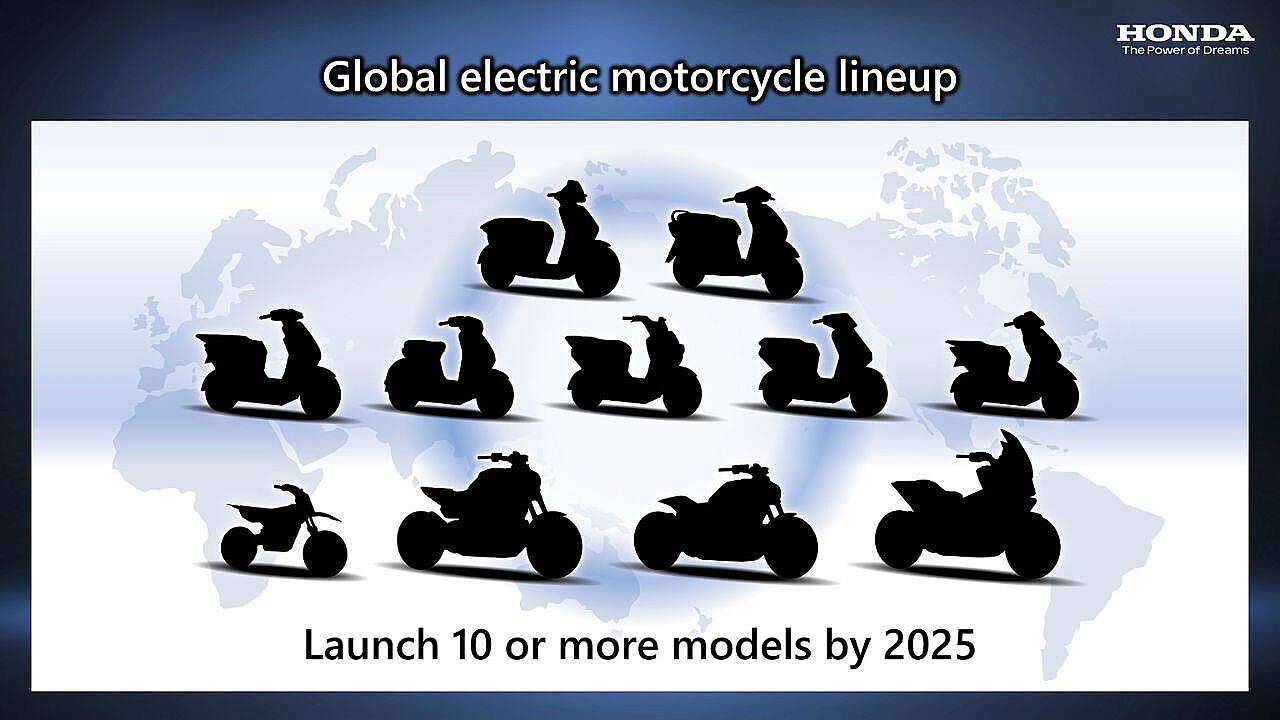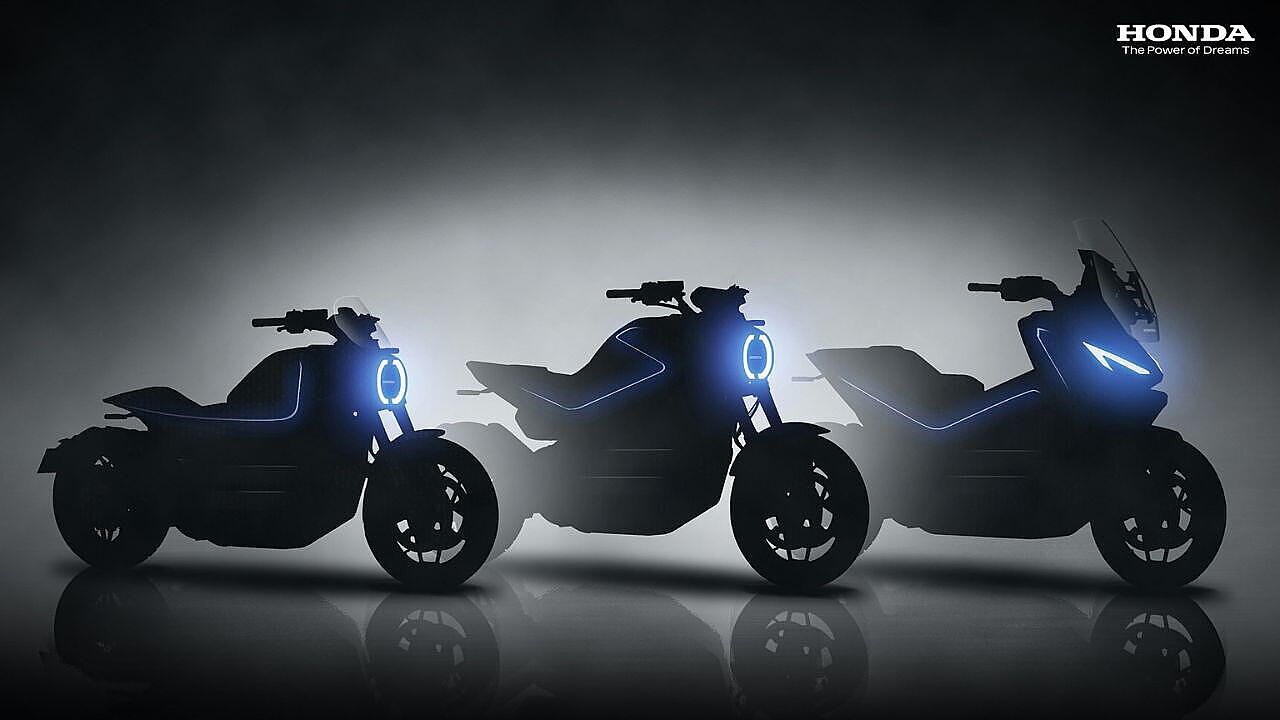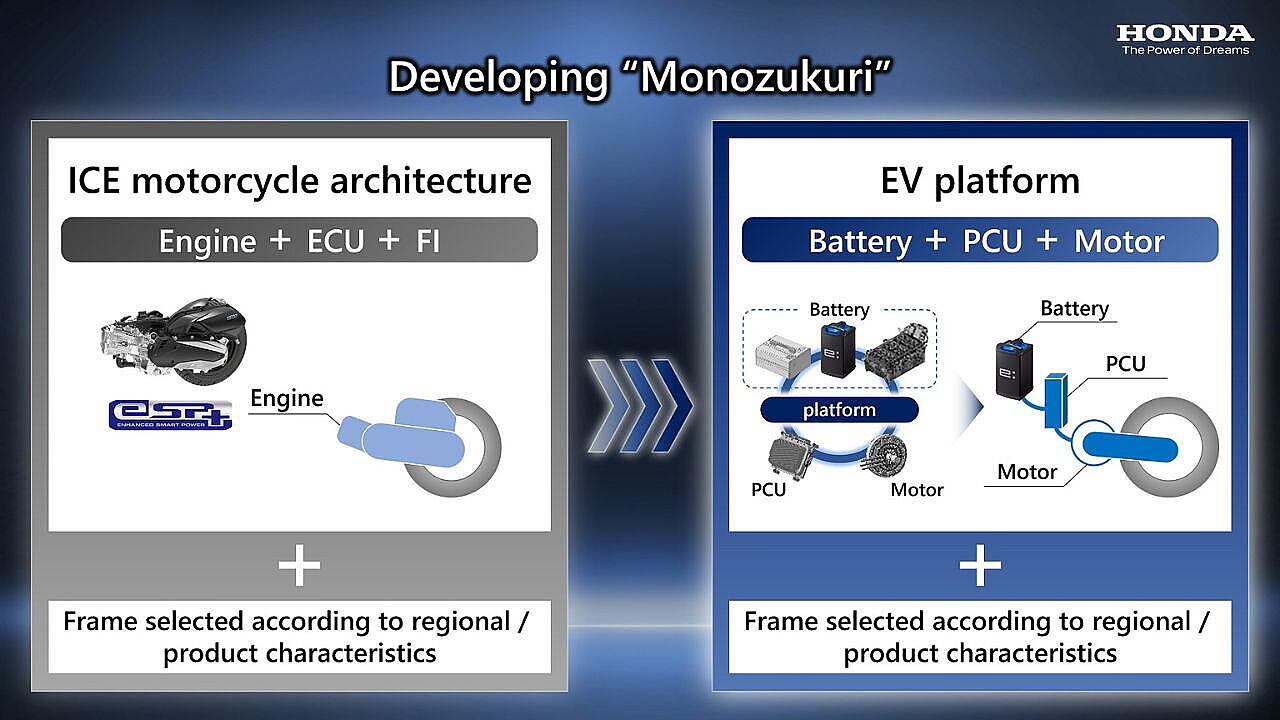
Honda plans to introduce two commuter electric two-wheelers between 2024 and 2025 across Asia, Europe and Japan. It is also exploring a range of future personal-use models which will be equipped with a power source and swappable batteries.
These announcements were made at a press conference in Japan on Tuesday chaired by Kohei Takeuchi (Director, Executive Vice President and Representative Executive Officer) and Yoshishige Nomura (Managing Officer).
It is not clear if India will be part of this plan though Honda confirmed that it would introduce flex-fuel two-wheelers in the country. The company’s wholly-owned subsidiary, Honda Motorcycle & Scooter India (HMSI) will launch the flex-fuel (E20, which is 20% ethanol) in 2023, followed by flex-fuel (E100, which is 100% ethanol) models in 2025.
This is in line with what Atsushi Ogata, Managing Director, President & CEO of HMSI, had told this writer in a recent interview. “Honda has a lot of experience in Brazil over the last decade where we sell flex-fuel bikes and have the technology,” he said. Emission norms in Brazil are less than Euro-4 levels while India “is the toughest” at Euro-5/BS-6.

“BS-6 with flex-fuel technology is a first for Honda but we have the confidence to launch the first flex-fuel model before end-2024,” said Ogata. The company’s plans are also in sync with the Centre’s “energy strategy direction” to reduce oil imports and enhance the agriculture segment with sugarcane that permits biofuel conversion.
It was also a year ago when the Centre officially announced its biofuel roadmap, and “we are in line with this vision”. HMSI is likely to work on extending the flex-fuel gasoline engine applications beyond 2025, and Ogata said the company would increase its product portfolio with “flex-fuel types gradually”.
Whilst on the subject of India, Honda announced at its Japan press conference that it would begin its battery-sharing service for electric tricycle taxis (autorickshaws) in the country by the end of this year. It also plans “to expand its initiatives to popularise battery sharing to other Asian nations”.
India also found a mention on standardisation of batteries at this press meet when Honda said it was working with a partner company in India. For Japan, the company has already joined hands with Yamaha, Suzuki and Kawasaki for swappable batteries in a consortium called 'Gachaco', which includesan energy company, Eneos, as the fifth partner.
The goal of this consortium is to “contribute to the realisation of a recycling-oriented society by building a BaaS (battery as a service) platform for electric mobility” and other battery recycling systems. The next stage is to become a real business where the JV will use the Honda battery swapping system in Japan.
In Europe, Honda and Yamaha are part of a consortium which includes KTM and Piaggio, but talks are still on to “harmonise' hardware and software in a fuel tank. As Ogata told this writer, the EU has “so many countries with different regulations” that a convergence in solutions would take time.
As for India, Honda has created a battery swapping service company in Bengaluru, Honda Power Pack Energy India, which could pave the way for partnerships with other OEMs. There have been reports doing the rounds that HMSI and Yamaha could even contemplate teaming up at the backend for battery management, but for now, this remains in the realm of speculation.
Honda reiterated at Japan meet that it would accelerate the electrification of its motorcycle models while also continuing to advance ICE (internal combustion engines). Plans are on to launch “10 or more” electric motorcycle models globally by 2025 and increase annual sales of electric models to one million units within the next five years and 3.5 million units (equivalent to 15% of total unit sales) by 2030.
According to Honda, there is high demand for motorcycles, especially commuter models, in emerging nations. However, “popularisation of electric models faces challenges” such as heavier vehicle weight and higher prices. Demand for electric models also depends largely on government incentives, regulations and the availability of charging infrastructure across different markets.

Given this backdrop, Honda will accelerate the electrification of motorcycles as “the primary focus of environmental strategies for motorcycle business” while also continuing to advance ICE. This is part of the objective to achieve carbon neutrality for all of its motorcycle products during the 2040s.
Honda will specifically continue its initiatives to reduce CO2 emissions from ICE models while also developing models compatible with carbon-neutral fuels such as gasoline-ethanol blends as in the case of India and Brazil.
Electric mopeds and bicycles account for more than 90% of global electric motorcycle unit sales (approximately 50 million units). In China, the world’s largest electric motorcycle market, these options are “widely adopted as a convenient form of everyday mobility.” Honda plans to introduce a total of five compact and affordable electric mopeds and bicycles between now and 2024 across Asia, Europe and Japan, in addition to China.
The company will also launch three large Fun V models across Japan, the US and Europe between 2024 and 2025 so “designed to pass on the joy of riding to the next generation”.
Also Read:
Honda Inching Towards Largest Two-Wheeler OEM Tag In India?
Honda Launches 2022 Gold Wing Tour At INR 39.2 Lakh In India